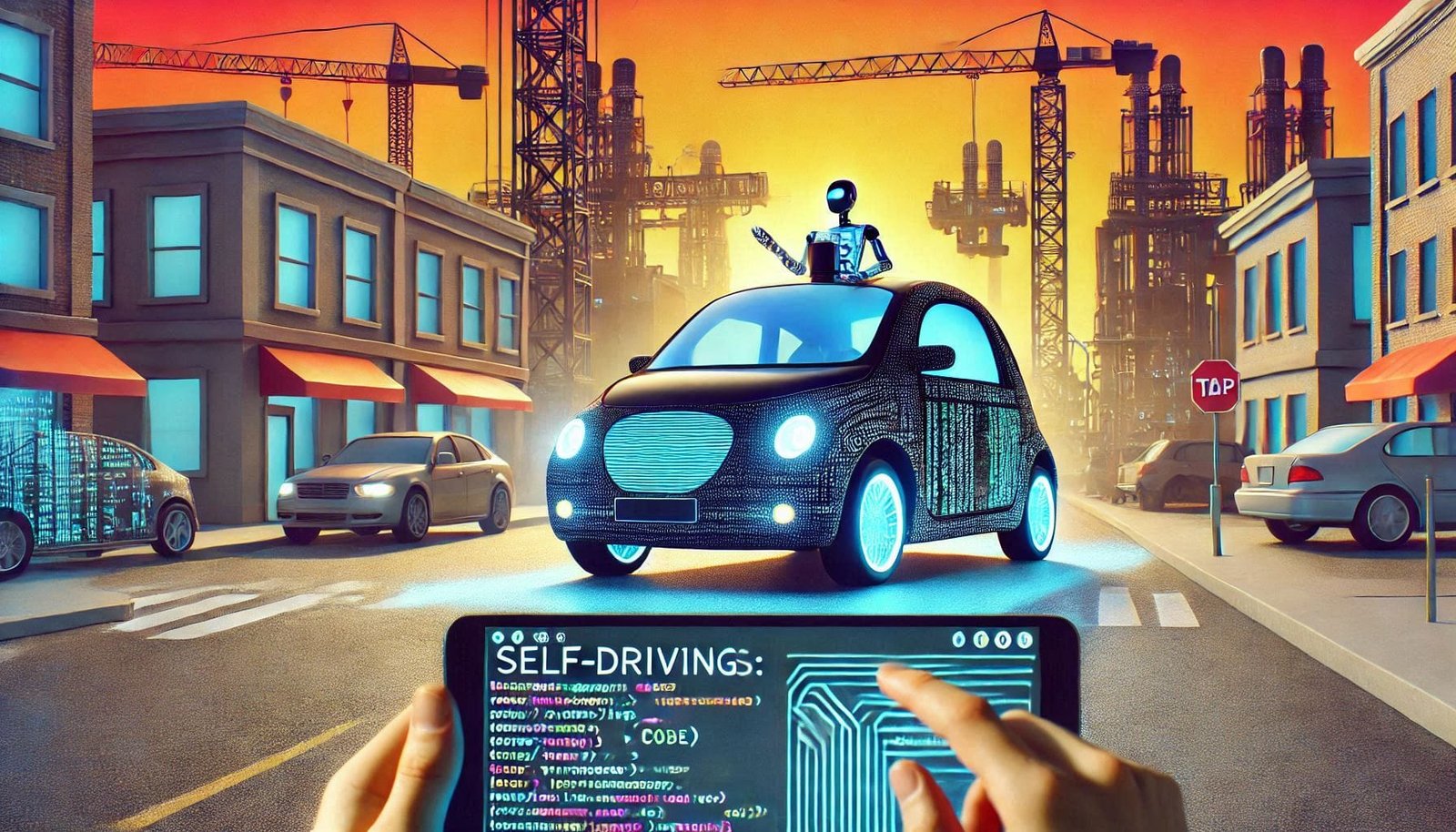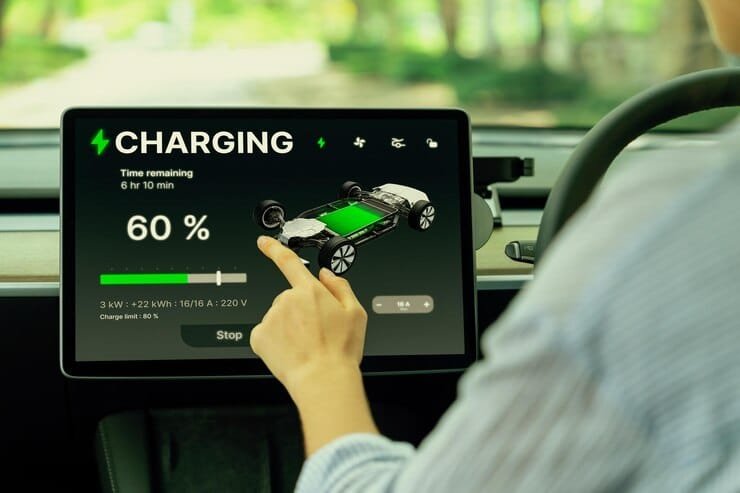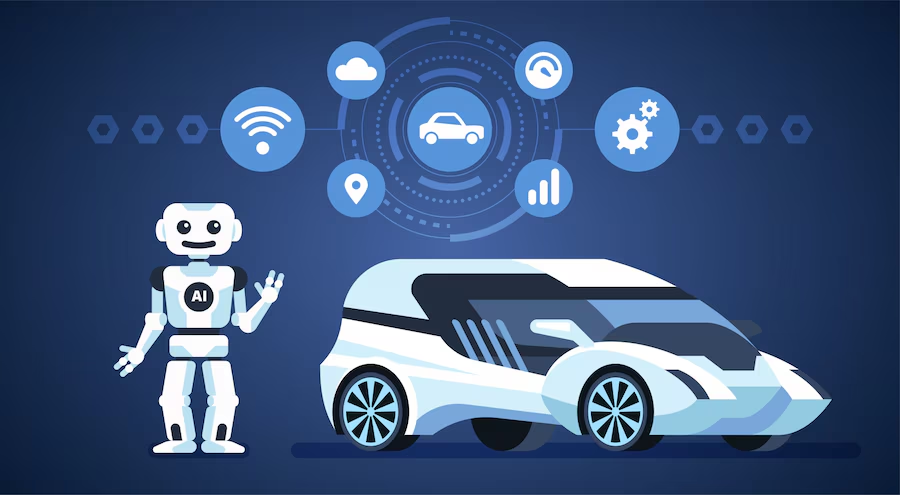Self-Driving Cars: Will Code Kill the Car Industry? – An Overview
The automotive landscape is undergoing a radical transformation, driven by the relentless advance of autonomous vehicle (AV) software. No longer a futuristic fantasy, Level 4 and Level 5 autonomy are rapidly moving from research labs into real-world deployment, albeit with significant challenges. This shift necessitates a critical examination of the industry’s future, prompting the central question: will the software defining these vehicles ultimately disrupt or even dismantle traditional automotive manufacturing models?
This blog post delves into the complex interplay between software engineering, automotive design, and business strategy within the context of AV development. We will analyze the implications of shifting from mechanical engineering dominance to software-defined vehicles (SDVs), where algorithms, sensor fusion (e.g., LiDAR, radar, cameras), and deep learning models become the primary determinants of vehicle functionality and safety.
The Current Landscape: The AV software ecosystem is a multifaceted network involving diverse stakeholders: Original Equipment Manufacturers (OEMs), Tier 1 suppliers, software startups, and research institutions, each contributing to the complex software stack encompassing perception, localization, planning, control, and human-machine interface (HMI). The development lifecycle itself presents unique hurdles, including rigorous safety validation and verification (V&V) processes mandated by functional safety standards like ISO 26262 and SOTIF (Safety of the Intended Functionality). The sheer volume of code, often exceeding millions of lines, necessitates sophisticated DevOps strategies and continuous integration/continuous delivery (CI/CD) pipelines for efficient development and deployment.
Significance: The dominance of software in AVs represents a paradigm shift of monumental proportions. The traditional automotive value chain, built around mechanical engineering and manufacturing prowess, faces a potential upheaval. The competitive landscape is being reshaped, with technology giants entering the fray and established players vying for dominance in software-defined features and over-the-air (OTA) updates. This necessitates a deep understanding of not only the technological challenges, but also the business models and regulatory frameworks required to navigate this rapidly evolving landscape. The success – or failure – of the AV revolution hinges on the mastery of autonomous vehicle software engineering and its strategic integration into the broader automotive ecosystem.
## Autonomous Vehicle Software Market: A Trend Analysis
The autonomous vehicle (AV) software market is experiencing rapid evolution, shaped by a complex interplay of technological advancements, regulatory landscapes, and market dynamics. This analysis categorizes key trends and provides actionable insights for strategists.

I. Positive Trends:
A. Rise of AI-powered Perception & Decision-Making: Deep learning, particularly convolutional neural networks (CNNs) and recurrent neural networks (RNNs), are revolutionizing object detection, path planning, and decision-making in AVs. This surpasses traditional computer vision techniques in robustness and accuracy.
- Impact: Companies specializing in AI algorithms and sensor fusion are poised for significant growth.
- Example: Mobileye’s EyeQ system utilizes deep learning for superior perception capabilities, securing partnerships with major automakers.
- Actionable Insight: Invest in R&D for advanced AI algorithms, focusing on edge computing and efficient model deployment for low-latency real-time performance. Develop strong data pipelines for continuous model training and improvement.
B. Growth of Simulation & Virtual Testing: The use of high-fidelity simulators, including digital twins of real-world environments, is crucial for testing and validating AV software. This accelerates development, reduces physical testing costs, and improves safety.
- Impact: Companies providing simulation platforms and validation tools will witness increased demand.
- Example: dSPACE and CARLA (an open-source simulator) are enabling faster and more comprehensive testing of AV software stacks.
- Actionable Insight: Leverage simulation extensively to reduce development time and cost. Develop modular software architectures amenable to testing in diverse simulated scenarios, including edge cases and uncommon weather conditions.
C. Open Source & Collaboration: The adoption of open-source software components, particularly in perception and mapping, fosters collaboration and accelerates innovation. This reduces development time and allows for quicker integration of new technologies.
- Impact: Companies with robust open-source contributions and strong community engagement gain a competitive advantage.
- Example: Apollo (Baidu) and Autoware.AI contribute significantly to the open-source AV software ecosystem, fostering widespread adoption.
- Actionable Insight: Participate actively in open-source communities, contributing valuable code and expertise. Leverage open-source components strategically to accelerate development and reduce costs while maintaining control over critical functionalities.
II. Adverse Trends:
A. Regulatory Uncertainty & Fragmentation: Varying regulatory frameworks across different jurisdictions create significant challenges for deploying AVs globally. This leads to increased development costs and market fragmentation.
- Impact: Companies must navigate complex regulatory landscapes, adapting their software to meet diverse requirements.
- Example: The varying levels of autonomy permitted in different states within the US highlight the challenge of regulatory harmonization.
- Actionable Insight: Develop modular software architectures that can be easily adapted to different regulatory environments. Engage actively with regulatory bodies to shape future policies.
B. Safety & Liability Concerns: Public perception of safety and the associated liability issues remain significant barriers to widespread AV adoption. Accidents, however infrequent, can severely impact public trust and hinder market growth.
- Impact: Companies must prioritize safety rigorously and demonstrate robust safety validation processes.
- Example: Tesla’s Autopilot incidents highlight the challenges associated with ensuring the safety and reliability of AV systems.
- Actionable Insight: Invest heavily in safety testing and validation, utilizing both simulation and real-world testing. Develop transparent and robust safety reporting mechanisms. Proactively address public concerns about safety through clear communication and proactive engagement.
C. Cybersecurity Threats: AVs are increasingly vulnerable to cyberattacks, potentially leading to accidents or data breaches.
- Impact: Companies must prioritize cybersecurity throughout the software development lifecycle.
- Actionable Insight: Implement robust security measures, including secure coding practices, intrusion detection systems, and regular security audits. Collaborate with cybersecurity experts to address evolving threats.
Successfully navigating these trends will require a strategic approach that combines technological innovation, robust safety protocols, and proactive engagement with regulators and the public. Companies that adapt quickly and effectively to this dynamic environment will be best positioned for success in the rapidly evolving AV software market.
### Healthcare: Automated Medical Sample Transportation
Hospitals are using autonomous mobile robots (AMRs) for efficient intra-hospital logistics. These robots, guided by SLAM (Simultaneous Localization and Mapping) algorithms and equipped with object detection using LiDAR and computer vision, navigate complex hospital environments autonomously, transporting blood samples, medications, and other critical supplies between labs, pharmacies, and wards. This reduces logistical bottlenecks, improves turnaround times for diagnostic tests (reducing mean time to diagnosis, MTTD), and frees up human staff for patient care. The system’s performance is measured by metrics such as delivery success rate, average delivery time, and collision avoidance rate. Deployment requires careful integration with existing hospital infrastructure, including elevator systems and security protocols.
Technology: Data Center Automation
Large technology companies are implementing autonomous guided vehicles (AGVs) within their data centers for tasks like server rack maintenance and equipment transport. These AGVs rely on precise localization techniques like RTK-GPS and inertial navigation systems (INS) for navigation within the controlled environment. Path planning algorithms optimize routes, considering factors like server accessibility and minimizing disruption to ongoing operations. Performance is monitored through metrics such as uptime, operational efficiency, and mean time between failures (MTBF). Sophisticated fleet management systems coordinate multiple AGVs to optimize resource utilization, minimizing downtime and enhancing efficiency.
Automotive: Automated Guided Vehicles in Manufacturing
Automotive manufacturers utilize fleets of AGVs for just-in-time delivery of parts to assembly lines. These systems typically employ magnetic tape guidance or laser-based navigation systems, minimizing the need for extensive environmental modification. The scheduling and routing of AGVs are optimized using algorithms such as Dijkstra’s algorithm or A*, ensuring timely delivery and minimizing wait times. Key performance indicators (KPIs) include throughput, material handling efficiency, and the reduction in line-stoppage events. Integration with manufacturing execution systems (MES) is critical for real-time monitoring and control.
Manufacturing: Autonomous Forklifts in Warehouses
Warehouses are increasingly using autonomous forklifts for material handling. These forklifts utilize a combination of sensors (LiDAR, cameras, ultrasonic) and advanced perception algorithms to navigate complex warehouse layouts, avoiding obstacles and humans while precisely locating and handling pallets. Path planning algorithms account for dynamic obstacles and optimize for efficient throughput. Safety is paramount, requiring robust emergency stop mechanisms and sophisticated collision avoidance systems. Performance is tracked using KPIs such as cycle time, throughput, and safety incidents. The ROI is calculated by considering labor cost reduction, increased efficiency, and reduced risks associated with manual forklift operation.
### Strategic Partnerships & Joint Ventures (Inorganic)
Since 2023, several autonomous vehicle software companies have accelerated inorganic growth through strategic partnerships and joint ventures. For example, imagine a company specializing in sensor fusion technology partnering with a mapping company to create a comprehensive, highly accurate perception system. This collaboration combines existing strengths, reducing development time and costs significantly. Another example involves a software company teaming up with a major automaker to integrate its autonomous driving stack into a specific vehicle model, securing a large-scale deployment opportunity and immediate market access. This significantly boosts the software’s validation and real-world testing.
Focus on Niche Applications (Organic)
Instead of pursuing fully autonomous driving in all scenarios immediately, several companies have adopted a strategy of focusing on niche applications with high returns and manageable complexity. This could involve specializing in autonomous trucking for long-haul routes, robotaxi services within geographically limited areas, or autonomous delivery robots for last-mile logistics. This allows companies to gather real-world data in a more controlled environment, refine their software, and demonstrate profitability faster. This approach reduces the scope of initial deployment and risk associated with full autonomy.
Enhanced Data Collection & Simulation (Organic)
The reliance on vast datasets for training and validating autonomous driving systems is paramount. Companies are investing heavily in enhancing their data collection methods. This includes deploying fleets of vehicles equipped with advanced sensor suites, actively seeking edge-case scenarios to improve the robustness of their systems. In parallel, investments in high-fidelity simulation environments are accelerating, allowing virtual testing under various conditions far exceeding the capabilities of real-world data collection. This reduces the reliance on costly real-world testing, speeding up the development cycle.
Modular Software Architecture (Organic)
The shift towards modular and easily adaptable software architectures allows companies to rapidly upgrade and improve their systems. This strategy allows for more flexible deployment across different vehicle platforms and easier integration with new sensor technologies or functionalities. Companies are moving away from monolithic systems to modular designs, where specific components (perception, planning, control) can be updated or replaced independently. This reduces overall development time and cost of updates.

Outlook & Summary: The Autonomous Vehicle Software Revolution
The next 5-10 years will witness a dramatic reshaping of the autonomous vehicle (AV) software landscape. We anticipate a shift from primarily rule-based systems, characterized by limited operational design domains (ODDs) and reactive decision-making, towards more sophisticated architectures employing deep learning, reinforcement learning, and advanced sensor fusion techniques. This evolution will necessitate a paradigm shift in software development methodologies, moving towards Model-Based System Engineering (MBSE) and AI-centric development pipelines.
Software Complexity and Scalability: The exponential growth in data volume generated by sensor arrays (LiDAR, radar, cameras) will demand highly efficient data processing pipelines leveraging edge computing and cloud-based infrastructure. Managing the computational complexity of real-time decision-making within stringent latency constraints remains a significant hurdle. Scalability across diverse vehicle platforms and ODDs will require highly modular and adaptable software architectures, potentially based on microservices and service-oriented architectures (SOA).
The Broader Automotive Software Context: The AV software revolution is intrinsically linked to the broader transformation of the automotive industry. AV software development necessitates advancements in other areas such as functional safety (ISO 26262), cybersecurity (SOTIF), and over-the-air (OTA) updates – all crucial aspects of modern automotive software development. The shift towards software-defined vehicles (SDVs) will see AV software become an integral, and potentially dominant, component of the overall vehicle software stack. This will lead to increased competition and collaboration across the ecosystem, involving traditional automakers, technology companies, and specialized AV software providers.
Key Takeaway: The future of the automotive industry hinges on the successful development and deployment of robust, safe, and scalable AV software. The challenges are substantial but the potential rewards—transforming transportation and reshaping urban environments—are immense. However, the industry must grapple with the ethical and societal implications, along with the potential for significant disruption.
Looking Ahead: Given the intricate interplay between software complexity, safety certifications, and market demand, what strategic partnerships and technological innovations will ultimately define the winners and losers in the autonomous vehicle software race?






